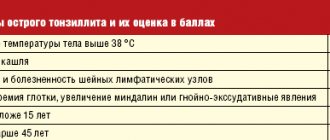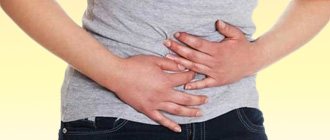Authors : Vasilenko V.V.
“Dream Team: 36.6”, 2008 No. 20 (144), October. Category “From a scientific point of view”
Patient complaints about problems in one way or another related to gas formation are very frequent, but the issue is rarely subjected to serious analysis; the doctor often simply accepts the patient’s point of view on the problem (the notorious dysbiosis!) and, accordingly, help is not always satisfactory, much less radical . Knowledge of the basics of normal and pathological physiology helps to understand the patient’s condition and well-being in more detail and outline a strategy for a therapeutic approach. The proposed material covers issues of the physiology of a healthy body that are not included in the curricula of higher medical schools.
Where do we get so many gases?
There are two sources of gas that accumulates in the lumen of the digestive tract.
1. When swallowing, we ourselves push air into the stomach.
A person swallows on average about 600 times a day (200 times during meals, 50 times during sleep, 350 times the rest of the time), mostly unconsciously. A small amount of air (2-3 ml) enters the stomach with each act of swallowing. Its physiological role is to stimulate gastric motility. Some of the air passes through the pylorus into the intestine. With excess accumulation of air in the stomach and increased intracavitary pressure, belching occurs.
| Air consists of nitrogen (78 volume %) and oxygen (21%), one percent is noble gases and carbon dioxide; solubility of air in water is 29 cm3/l. |
2. Gases can be produced by intestinal bacteria.
Most carbohydrates entering the digestive tract with food are digested and absorbed in the small intestine with the participation of specific enzymes. The oligosaccharide sugars verbascose, raffinose and stachyose, found primarily in vegetables and fruits, are not digested and are captured by the colonic flora. With the participation of bacterial enzymes, these indigestible carbohydrates are broken down into organic acids and gases - hydrogen (H2) and carbon dioxide (CO2), and in some people, methane (CH4). Complex polysaccharides such as xylans, pectin, micropolysaccharides, and glycoprotein are also broken down primarily by the colon microflora. In addition, some microorganisms break down undigested food protein into amines, phenols, indoles, ammonia (NH3) and other volatile products.
It is believed that the composition of the intestinal flora is established during the first 8 years of life under the influence of family eating habits.
Gas exchange in the digestive tract of a healthy person is schematically presented in Figure 1.
Vasilenko V.V. Be careful of gases! / www.GastroScan.ru
| Authors: Vasilenko V.V. |
Be careful of gases!
Vladimir Vladimirovich Vasilenko, Ph.D.
Patient complaints about problems in one way or another related to gas formation are very frequent, but the issue is rarely subjected to serious analysis; the doctor often simply accepts the patient’s point of view on the problem (the notorious dysbiosis!) and, accordingly, help is not always satisfactory, much less radical . Knowledge of the basics of normal and pathological physiology helps to understand the patient’s condition and well-being in more detail and outline a strategy for a therapeutic approach. The proposed material covers issues of the physiology of a healthy body that are not included in the curricula of higher medical schools.
Where do we get so many gases?
There are two sources of gas that accumulates in the lumen of the digestive tract.
1. When swallowing, we ourselves push air into the stomach. A person swallows on average about 600 times a day (200 times during meals, 50 times during sleep, 350 times the rest of the time), mostly unconsciously. A small amount of air (2-3 ml) enters the stomach with each act of swallowing. Its physiological role is to stimulate gastric motility. Some of the air passes through the pylorus into the intestine. With excess accumulation of air in the stomach and increased intracavitary pressure, belching occurs.
Air consists of nitrogen (78 volume %) and oxygen (21%), one percent is noble gases and carbon dioxide; solubility of air in water is 29 cm3/l.
2. Gases can be produced by intestinal bacteria.
Most carbohydrates entering the digestive tract with food are digested and absorbed in the small intestine with the participation of specific enzymes. The oligosaccharide sugars verbascose, raffinose and stachyose, found primarily in vegetables and fruits, are not digested and are captured by the colonic flora. With the participation of bacterial enzymes, these indigestible carbohydrates are broken down into organic acids and gases - hydrogen (H2) and carbon dioxide (CO2), and in some people, methane (CH4). Complex polysaccharides such as xylans, pectin, micropolysaccharides, and glycoprotein are also broken down primarily by the colon microflora. In addition, some microorganisms break down undigested food protein into amines, phenols, indoles, ammonia (NH3) and other volatile products. It is believed that the composition of the intestinal flora is established during the first 8 years of life under the influence of family eating habits.
Gas exchange in the digestive tract of a healthy person is schematically presented in Figure 1.
Rice. 1.
Gas exchange in the digestive tract of a healthy person.
Air is swallowed (1), excess air is regurgitated, either clearly or imperceptibly (2). Oxygen from the air in the stomach. absorbed into the blood (3). As a result of the reaction between hydrogen and bicarbonate ions, carbon dioxide is formed (4), which is also quickly absorbed into the blood (5), while nitrogen from the bloodstream enters the cavity of the small intestine (6). In the colon, bacteria produce carbon dioxide, hydrogen, and methane (7), which are carried into the bloodstream (8). Nitrogen travels from the bloodstream to the intestines (9). Bacteria consume oxygen and nitrogen (10).
Who lives in the little house?
The total area of the digestive tract is 200-300 square meters. m. The number and composition of microbes in its different sections vary significantly. The esophagus and stomach are inhabited by microorganisms that enter here with food and from the oral cavity. In the stomach, the number of bacteria is insignificant (less than 102 in 1 ml), which is associated with the acidity of its contents. The duodenum, jejunum and upper ileum contain more microbes (up to 103 in 1 ml), represented mainly by gram-positive bacteria. As you approach the cecum, the number of microbes in the ileum increases. In this case, the predominantly gram-positive flora is replaced by gram-negative ones.
The Danish physician Gram (1853-1938) proposed a differential diagnostic method of staining bacteria with certain dyes, which is still used today; Bacteria that stain purple are gram-positive, while bacteria that stain red are gram-negative.
However, in 50% of healthy people, the contents of the jejunum are sterile.
The detection of more than 105 microorganisms per 1 ml in the upper parts of the small intestine is considered a pathological indicator. The composition of the microflora of the digestive tract is presented in Figure 2. Fig. 2.
Microflora of the digestive tract.
Abbreviations: KOPC - final (distal) ileum; duodenum - duodenum; TC - jejunum; ILE - initial (proximal) section of the ileum.
An enema won't help here.
The cecum is the main habitat of microflora. The large intestine as a whole is the most colonized by microorganisms, so the number of bacteria in feces can reach 1012 per 1 g of contents, i.e. a trillion microbes in one gram of feces. Moreover, the number of anaerobes is 100-1000 times higher than that of aerobic bacteria. It has been shown that microorganisms are detected on the surface of the intestinal mucosa even after washing it fifty times. Considering the rate of microbial proliferation, it can be assumed that intestinal lavage procedures cannot significantly and lastingly affect the intestinal flora.
Gas composition of intestinal contents
Hydrogen.
The presence of H2 in the intestines and, consequently, in the exhaled air of a person is the result only of the vital activity of bacteria that consume carbohydrates. It easily passes through the intestinal wall into the blood and is then exhaled by the lungs.
Methane
formed by obligate anaerobes (that is, microorganisms that can exist and reproduce without oxygen and die in its presence); Indole is an important source of CH4 formation in the intestine. Methanobacteria are found in the feces of 90% of people, and CH4 is found in exhaled air in 30-40% of people. People with constipation produce more methane.
Carbon dioxide
is formed as a result of microbial fermentation of carbohydrates, including those found in plant fibers.
Ammonia.
Most of the urea is excreted in the urine, but about 30% enters the intestines, where, with the participation of bacteria, it is converted into ammonia. Ammonia is highly soluble in water.
Hydrogen sulfide
is formed primarily during the conversion of sulfur-containing amino acids by bacteria.
Thus, the main gas components in the digestive tract are carbon dioxide, hydrogen, methane, nitrogen and oxygen. Nitrogen and oxygen are of external origin, while carbon dioxide, hydrogen and methane are produced by bacterial fermentation. These gases are odorless. The smell of intestinal gas is partly due to hydrogen sulfide and ammonia, but so-called trace gases, found in concentrations below 1 part per million, play a significant role. These are sulfur-containing substances, such as methanethiol, dimethyl sulfide.
Is it normal to “spoil the air”?
The mechanisms that move gas through the digestive tube are not well understood.
In the colon, solid contents are transported 30-100 times slower than liquid or gas. The gas can travel from the teeth to the anus in 20-30 minutes. The normal number of gas emissions is calculated. In a study of healthy individuals of both sexes aged 21 to 59 years, it was noted that the average number of flatulences per day with a usual diet is approximately 10 (in other studies 14), and the volume of gas released per episode is 33-125 ml; no gender differences were found.
Something doesn't feel right...
We experience the world with the help of vision, hearing, taste, smell, balance apparatus, etc. However, inside us there are also mechanoreceptors located in the tissues of the muscular-articular apparatus, they perceive their stretching or contraction.
We feel such signals as discomfort, but we cannot definitely say what and where it hurts. Stretching (spasm) of any part of the digestive tract can cause a range of sensations from mild discomfort to pain.
Where and how does your stomach hurt?
Why does the stomach often hurt near the midline? Because the internal organs send a pain signal to the brain simultaneously and symmetrically on both sides of the spinal cord, involving several segments (see Figure 3). In addition, the number of nerve endings in internal organs is much less than in the skin. As a rule, the pain is dull and poorly localized.
Rice. 3.
Scheme of transmission of pain signals from the digestive organs to the brain
Clinical observations were compared with information from an experimental group of patients with pain in different parts of the digestive tract (see Figure 4), and the following information was obtained.
Stomach and duodenum area
. The pain from here is felt in the midline of the epigastrium. Pathology in the duodenal bulb can cause some discomfort in the right epigastrium. Stimulation of a more distant part of the intestine produces pain below, but also in the epigastrium. Often the pain radiates to the back.
Small intestine.
The pain is localized in the celiac region around the navel. The pain may radiate to the middle of the back if the stimulus is intense enough or if the individual sensitivity threshold is low.
Ileum.
The disease or stimulus usually produces pain near the navel, but sometimes in the hypogastrium or to the right of the midline.
Colon.
The pain is vaguely localized in the lower part of the celiac region, stimulation of the rectum creates discomfort in the sacrum area.
Rice. 4.
Localization of pain
Pain emanating from the organs depicted in Figures 1, 2 and 3 is felt in the epigastrium, celiac region and hypogastrium, respectively.
For the most part, intestinal pain depends on either stretching or spasm (convulsive contraction of the smooth muscles of the intestines). Often both pain mechanisms are combined. Pain that occurs as a result of intestinal distension by gases and associated with tension and irritation of the mesentery differs from spastic pain in two main ways:
1) lack of periodicity - they are long-lasting and gradually dull with the prolonged existence of swelling;
2) their fairly accurate localization. Pain caused by intestinal distension is initially perceived as internal, but may radiate to the back as the distension increases.
V.V. Vasilenko. Sixty essays on digestion (recommendations from a gastroenterologist to patients) Back to section
Who lives in the little house?
The total area of the digestive tract is 200-300 square meters. m. The number and composition of microbes in its different sections vary significantly. The esophagus and stomach are inhabited by microorganisms that enter here with food and from the oral cavity. In the stomach, the number of bacteria is insignificant (less than 102 in 1 ml), which is associated with the acidity of its contents. The duodenum, jejunum and upper ileum contain more microbes (up to 103 in 1 ml), represented mainly by gram-positive bacteria. As you approach the cecum, the number of microbes in the ileum increases. In this case, the predominantly gram-positive flora is replaced by gram-negative ones.
| The Danish physician Gram (1853-1938) proposed a differential diagnostic method of staining bacteria with certain dyes, which is still used today; Bacteria that stain purple are classified as gram-positive, while bacteria that stain red are gram-negative. |
However, in 50% of healthy people, the contents of the jejunum are sterile. The detection of more than 105 microorganisms per 1 ml in the upper parts of the small intestine is considered a pathological indicator.
How to prevent unpleasant odor?
If you have an unpleasant odor, consult a doctor who will analyze your stool and its frequency. With this information, you may be referred to a digestive specialist if gastrointestinal problems are suspected.
However, you can get rid of smelly flatulence by changing your diet.
Improve your fiber
This nutrient works wonders by stabilizing blood sugar levels, causing us to eat less and making us feel full. Additionally, it improves cholesterol levels and overall gut health.
If you decide to increase your fiber intake, you should do so with caution, as it can have the opposite effect if you introduce it too quickly.
Consuming large quantities when we are not used to it can cause flatulence due to bacterial byproducts. Therefore, increasing your daily fiber intake through food or supplements should be done gradually.
You can gradually increase your fiber intake by a couple of grams, and be sure to increase your water intake, which will help prevent constipation (and gas).
An enema won't help here.
The cecum is the main habitat of microflora. The large intestine as a whole is the most colonized by microorganisms, so the number of bacteria in feces can reach 1012 per 1 g of contents, i.e. a trillion microbes in one gram of feces. Moreover, the number of anaerobes is 100-1000 times higher than that of aerobic bacteria. It has been shown that microorganisms are detected on the surface of the intestinal mucosa even after washing it fifty times. Considering the rate of microbial proliferation, it can be assumed that intestinal lavage procedures cannot significantly and lastingly affect the intestinal flora.
Gas composition of intestinal contents
Hydrogen. The presence of H2 in the intestines and, consequently, in the exhaled air of a person is the result only of the vital activity of bacteria that consume carbohydrates. It easily passes through the intestinal wall into the blood and is then exhaled by the lungs. Methane is formed by obligate anaerobes (that is, microorganisms that can exist and reproduce without oxygen and die in its presence); Indole is an important source of CH4 formation in the intestine. Methanobacteria are found in the feces of 90% of people, and CH4 is found in exhaled air in 30-40% of people. People with constipation produce more methane.
Carbon dioxide is formed as a result of microbial fermentation of carbohydrates, including those found in plant fibers.
Ammonia . Most of the urea is excreted in the urine, but about 30% enters the intestines, where, with the participation of bacteria, it is converted into ammonia. Ammonia is highly soluble in water.
Hydrogen sulfide is formed primarily during the transformation of sulfur-containing amino acids by bacteria.
Thus, the main gas components in the digestive tract are carbon dioxide, hydrogen, methane, nitrogen and oxygen. Nitrogen and oxygen are of external origin, while carbon dioxide, hydrogen and methane are produced by bacterial fermentation. These gases are odorless. The smell of intestinal gas is partly due to hydrogen sulfide and ammonia, but so-called gas plays a significant role. Trace gases present in concentrations below 1 ppm. These are sulfur-containing substances, such as methanethiol, dimethyl sulfide.
Other reasons
Emotional tension and stress can also cause flatulence. When the nervous system is destroyed, problems with the digestive system begin. This in turn leads to frustration. Gases can also form as a result of dysbiosis, especially with long-term treatment with antibiotics. The intestinal microflora is disturbed, bloating, constipation, and diarrhea are possible.
When bloating is caused by stress or poor nutrition, it is easy to fix. It is enough to start by stabilizing your psycho-emotional state, adjusting your diet, the problem will go away by itself.
Is it normal to “spoil the air”?
The mechanisms that move gas through the digestive tube are not well understood. In the colon, solid contents are transported 30-100 times slower than liquid or gas. The gas can travel from the teeth to the anus in 20-30 minutes.
The normal number of gas emissions is calculated. In a study of healthy individuals of both sexes aged 21 to 59 years, it was noted that the average number of flatulences per day with a usual diet is approximately 10 (in other studies 14), and the volume of gas released per episode is 33-125 ml; no gender differences were found.
Where and how does your stomach hurt?
Why does the stomach often hurt near the midline? Because the internal organs send a pain signal to the brain simultaneously and symmetrically on both sides of the spinal cord, involving several segments. In addition, the number of nerve endings in internal organs is much less than in the skin. As a rule, the pain is dull and poorly localized.
Clinical observations were compared with information from an experimental group of patients with pain in different parts of the digestive tract and the following information was obtained. Area of the stomach and duodenum . The pain from here is felt in the midline of the epigastrium. Pathology in the duodenal bulb can cause some discomfort in the right epigastrium. Stimulation of a more distant part of the intestine produces pain below, but also in the epigastrium. Often the pain radiates to the back. Jejunum . The pain is localized in the celiac region around the navel. The pain may radiate to the middle of the back if the stimulus is intense enough or if the individual sensitivity threshold is low.
Ileum . The disease or stimulus usually produces pain near the navel, but sometimes in the hypogastrium or to the right of the midline.
Colon . The pain is vaguely localized in the lower part of the celiac region, stimulation of the rectum creates discomfort in the sacrum area.
For the most part, intestinal pain depends on either stretching or spasm (convulsive contraction of the smooth muscles of the intestines). Often both pain mechanisms are combined. Pain that occurs as a result of intestinal distension by gases and associated with tension and irritation of the mesentery differs from spastic pain in two main ways:
1) lack of periodicity - they are long-lasting and gradually dull with the prolonged existence of swelling;
2) their localization is quite accurate. Pain caused by intestinal distension is initially perceived as internal, but may radiate to the back as the distension increases.
Vasilenko V.V., gastroenterologist, candidate of medical sciences, associate professor of the department of internal diseases of the Moscow Medical Academy named after I.M. Sechenov, Moscow.
Please note: in January, a new book by Vasilenko V.V. “Secrets of Digestion”, 2009, went on sale.
Does the digestive system have secrets? It turns out there are a lot of them. Why bad breath and loud belching appear, what causes pain in the side and is it associated with a psycho-emotional state, why does the stomach growl after eating and how to stop sudden hiccups - every person encounters such phenomena, but not everyone knows how to deal with them cope with. What is “fishy odor disease” and the zigzag nutrition system, how to get rid of constipation and stop diarrhea without medications, is a low-calorie diet necessary and how diseases of the digestive system were treated 100 years ago - this is only a small part of what you have to learn.
The secrets of digestion are revealed by Vasilenko Vladimir Vladimirovich - associate professor, candidate of medical sciences, doctor, who has devoted 40 years to medicine.
V. Vasilenko, “Secrets of digestion” - ONLINE STORE : https://www.medknigaservis.ru/catalog/popularscientific/6452
published 20/10/2009 12:11 updated 13/05/2011 - Diseases of the gastrointestinal tract









